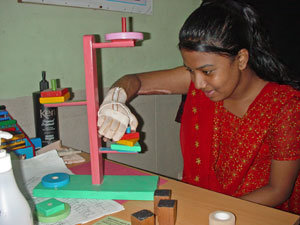Australian NGO: Interplast Australia and New Zealand
Local Partner: Centre for the Rehabilitation of the Paralysed (CRP)
2011-12 funding: $53,677
Burns incidence in Bangladesh is more than double that of developed countries. Research conducted by the Centre for Injury Prevention and Research in Bangladesh found that burns are the second largest cause of disability in Bangladeshi children and the major cause of morbidity in children aged 1-4 years old. A significant number of severe burns cases result in permanent disability including amputations, permanent scaring, loss of sight, and reduced mobility. Early and appropriate management of severe burns injury is therefore an important strategy in the prevention of disability.
With support from the ANCP and in partnership with Monash University and the Centre for Rehabilitation of the Paralysed (CRP), Interplast has initiated the Bangladesh Hand Therapy program. The program works to strengthen local capacity to manage, treat and rehabilitate those who have suffered serious burns to the hand. This specific project is part of a broader ANCP-funded Interplast activity in Bangladesh, covering a number of surgical and training projects in plastic and reconstructive surgery.
As part of the Bangladesh Hand Therapy program, Interplast sent two teams, each consisting of two hand therapists, to spend a week each at the CRP. These visits had a number of objectives, including numerous patient treatment sessions done in consultation with the visiting therapists, meetings and discussions with senior CRP management and administration to strengthen the support for Hand Therapy, joint workshops to facilitate better communication and cross-referral between Occupational Therapy and Physiotherapy (OT), general OT lectures and workshops and practical hands-on training utilizing locally-available equipment and supplies.
The program has resulted in considerable improvement in the capacity of the Bangladeshi hand therapists, both in terms of technical competency as well as their ability to manage patient demands. Early referral has also improved, leading to better patient outcomes.

